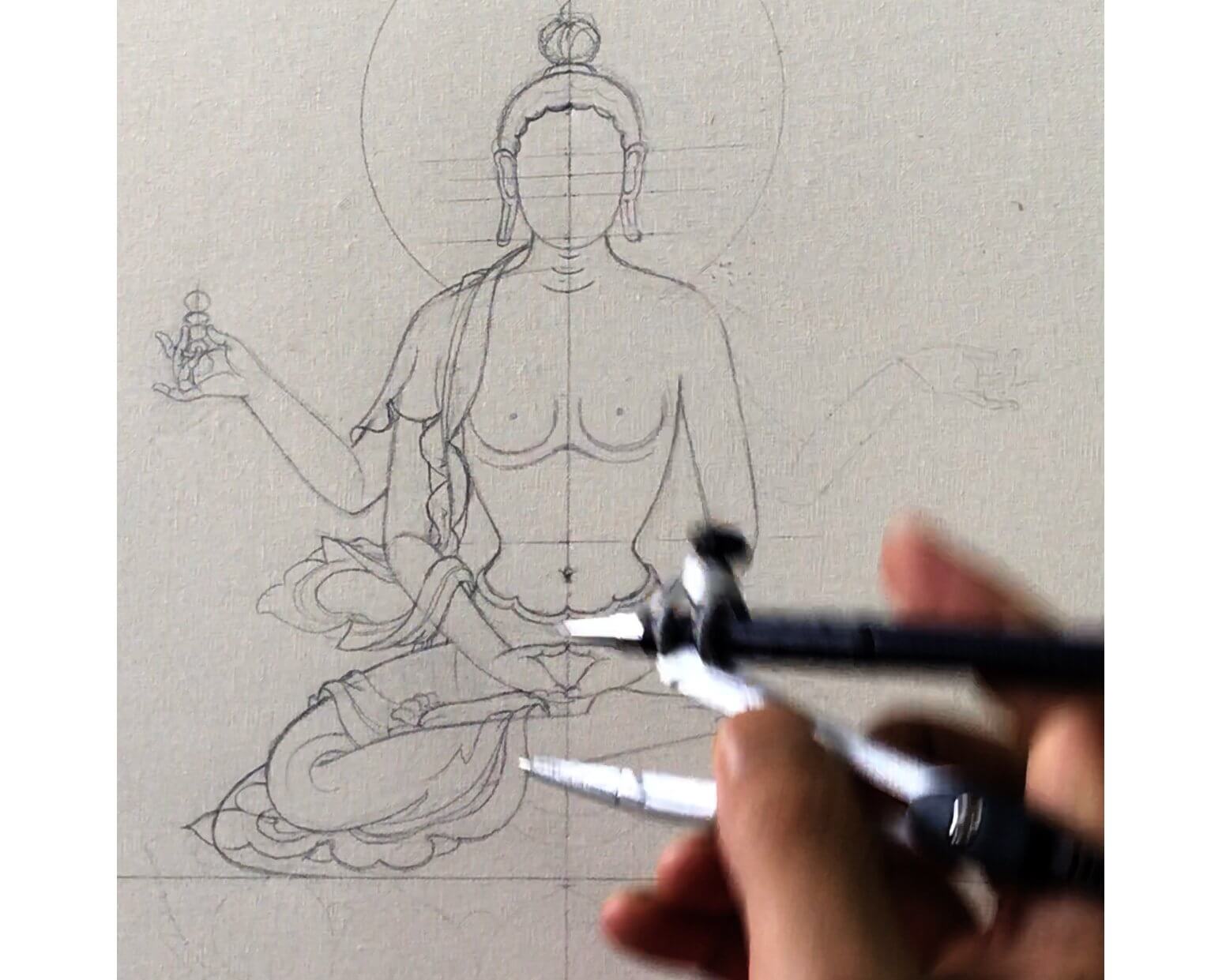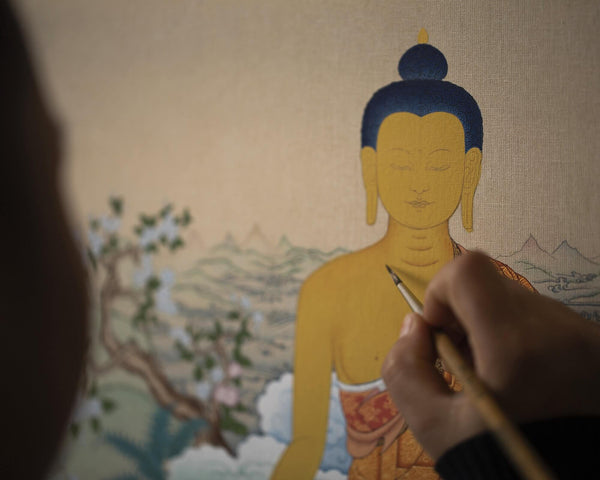The word for drawing in Tibetan is Rimo, which basically translates ri to "mountains" and mo to "girl." The origin of this word comes from a very interesting story that has been passed down to Tibetans from ages ago.
Along time ago, in a place called Yarlung in central Tibet, a nomad family had a shepherd boy. His name was Lukdzi Agar. He would doodle with chalk and charcoals on the pieces of slate and stones, of the scenes he saw around him. One day while he was herding the sheep along the mountain sides, there was Sun- shower. A rainbow appeared before him. Along with it, appeared a beautiful girl, dancing graciously and smiling at him. He fell in love with her instantly and ran towards the mirage. But they disappeared slowly.
When he returned home, he immediately traced her image on a slate, so that he could keep it forever. The vivid memory of her was clearly imprinted in his mind. The final image was just as beautiful as he has beheld her. When his friends saw this and asked him, he answered "ri bumo" which means mountain girl. But they misheard him as "rimo."
This is how it is believed that the word "rimo" became noun for the drawing in Tibet. Tibetan art has evolved a long way ever since, being one of the acclaimed art heritage in the World.
Refrence:
Lhadrepa, K. (2017). The Art of Awakening: A User's Guide to Tibetan Buddhist Art


